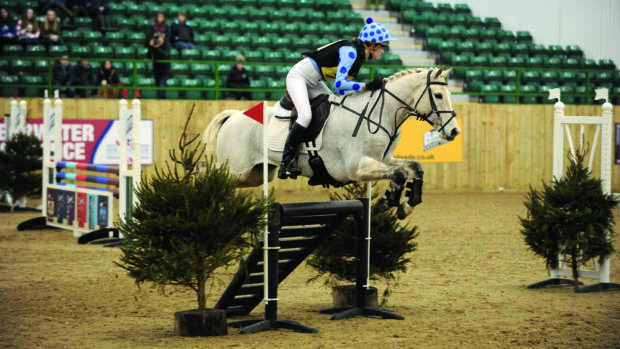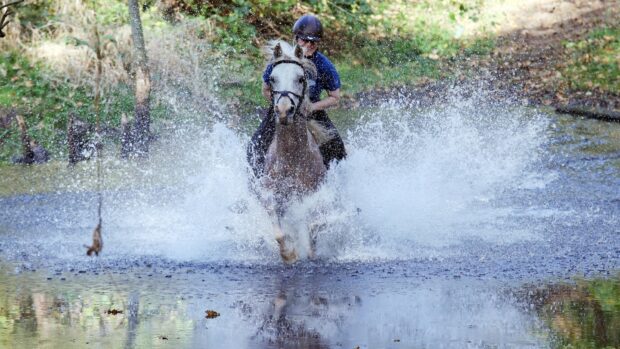This simple exercise, courtesy of top event rider Francis Whittington (pictured), provides a solid foundation for skinnies and arrowheads to help you when jumping a horse on an angle
Jumping a horse on an angle — the aim
If the horse understands that he must stay straight, no matter what he is presented with, then you can jump anything. There’s no need to practise repeatedly over arrowheads and skinnies. The trick is to create an angle over a basic fence so the horse develops balance through his shoulder. By teaching him to be straight and even into the contact, you can both work on the precision needed for these more technical fences using a very straightforward jump — without scaring yourselves.
Exercise

1. Set up a simple fence on the centre line of your schooling area, something small and upright but wide. It should be easy, so the horse can work well within his comfort zone and you can both concentrate on staying straight and accurate. Canter down the centre line and over the fence in each direction, aiming for the middle spot each time.
2. Gradually increase the angle of the approach, still aiming for the centre of the fence and controlling the horse’s outside shoulder with your leg. His job is to stay straight in the direction you ride him, so make this clear.
3. With this established, you can begin to ask more questions. Continue to increase the approach angle by increments until you are almost coming across the arena on the diagonal. With practice, you’ll both develop an eye for jumping the fence on an angle.
4. Now aim to start jumping towards the outer edge of the fence. This will give the horse the opportunity to run out, but he should by now understand the requirement to jump.
5. Once you’ve mastered the exercise in the arena, try it over a basic fence when you’re cross-country schooling. It’s something you can practise on your own, without a trainer, and should provide a solid foundation when you do move on to the more demanding technical fences.
Article continues below…
You might also be interested in:

What is medium trot, and what are the benefits for your horse?

8 ways to (attempt) to keep your unhorsey partner on side
There’s nothing half-hearted, part time or lackluster when it comes to you and horses. Which is unfortunate for your unhorsey

Subscribe to Horse & Hound magazine today – and enjoy unlimited website access all year round
Tips and pitfalls
- A run-out in the early stages means going back to square one, so take things steady and don’t be tempted to rush the process. Increase the approach angle over a number of sessions.
- Be positive, but aim for accuracy rather than pace.
- Stay balanced in the saddle and be confident about jumping straight at your chosen angle, leaving your horse sure which way to go.
Horse & Hound magazine, out every Thursday, is packed with all the latest news and reports, as well as interviews, specials, nostalgia, vet and training advice. Find how you can enjoy the magazine delivered to your door every week, plus options to upgrade to access our H&H Plus online service which brings you breaking news as it happens as well as other benefits.



